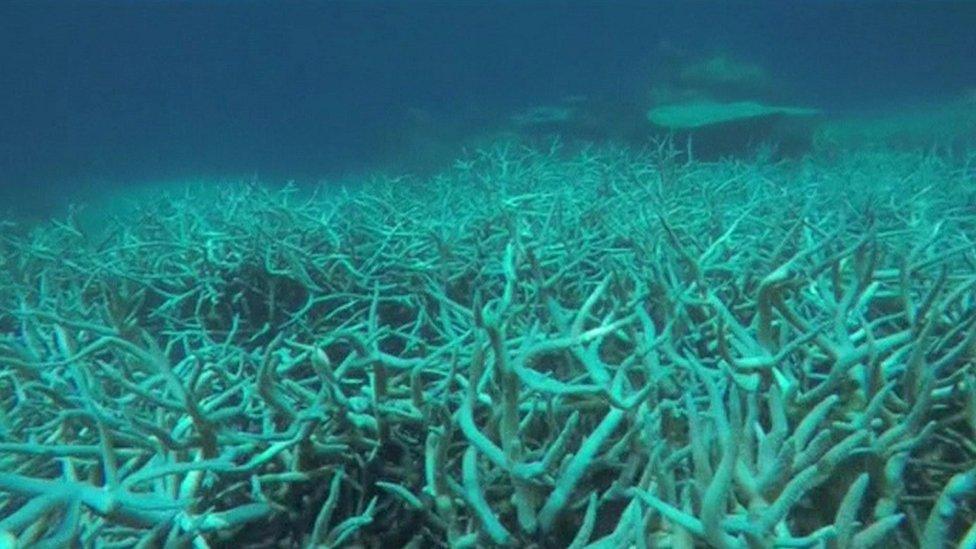Pheromones may help foil reef-killing starfish
- Published
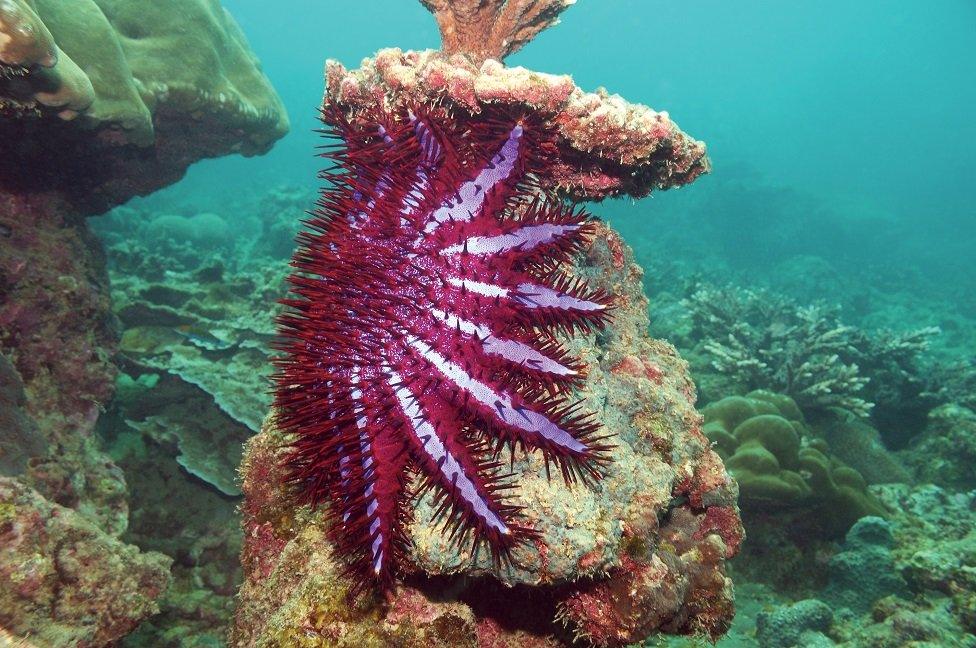
The species has been described as a significant threat to coral
A starfish considered a key threat to international coral reefs could be thwarted by harnessing its own pheromones, scientists say.
The crown-of-thorns starfish has ravaged Australia's Great Barrier Reef by smothering and eating coral tissue.
Researchers believe the pest could be lured for removal by fabricating the chemicals it uses to attract a mate.
The study unmasks how the species congregates in huge swarms, the Australian and Japanese team said.
The research, published in the journal Nature, external, studied the genomes of starfish gathered from the two nations.
It decoded the pheromones responsible for drawing starfish together so they could reproduce, said lead researcher Prof Bernard Degnan.
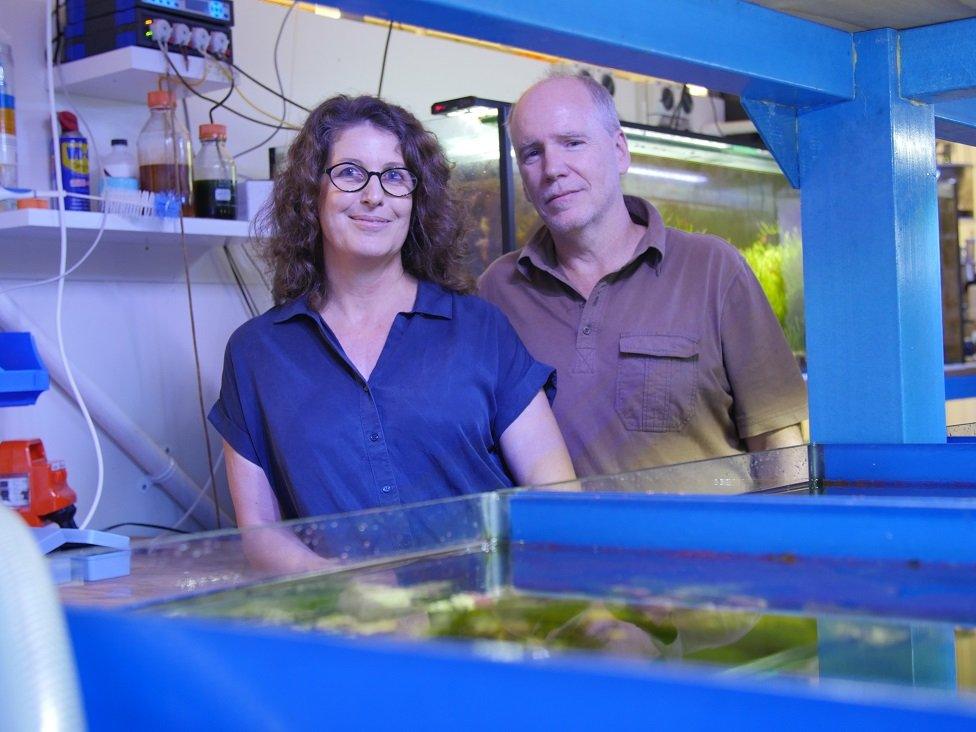
Husband-and-wife researchers Associate Prof Sandie Degnan and Prof Bernard Degnan
"We were able to use that approach to understand the chemistry that the starfish use to communicate with each other," he told the BBC.
"The next step is to use that information to fabricate bait based on these protein sequences."
He said the bait could "trick" the species into forming clusters, allowing them to be removed.
He suggested commercial fishers could even use the technique, perhaps for a bounty.
"Coral bleaching has taken a lot of limelight over the last year, but crown-of-thorns cause as much destruction," said Prof Degnan, a marine and molecular biologist.
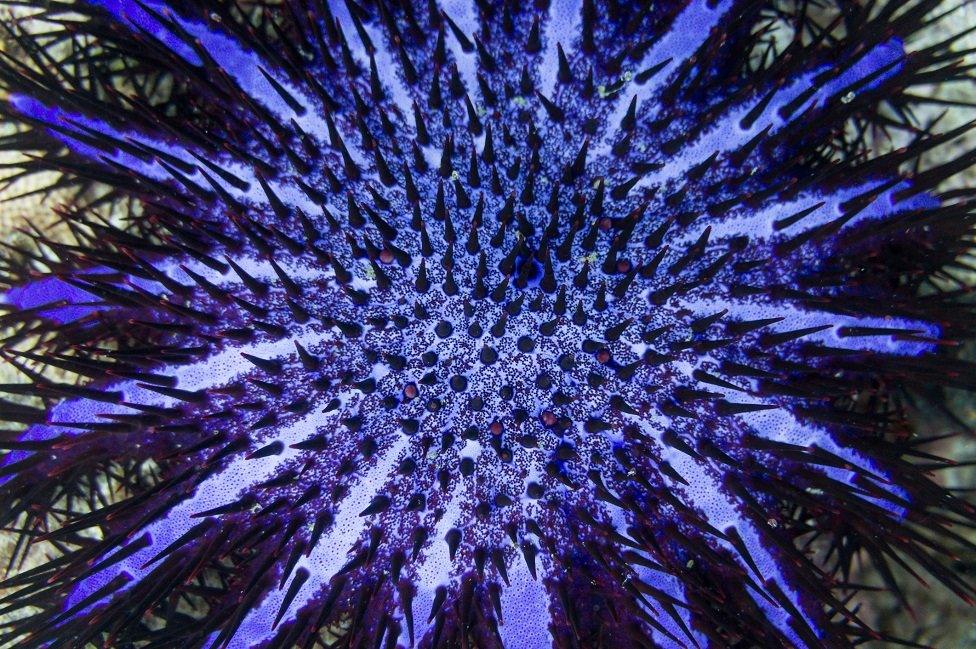
The species has contributed to a decline in coral population
The study included researchers from the University of Queensland, the Australian Institute of Marine Science, the Okinawa Institute of Science and Technology and the University of the Sunshine Coast.
It follows other attempts to control the species, including the use of divers, robots and sea snails.
- Published29 March 2017

- Published16 March 2017
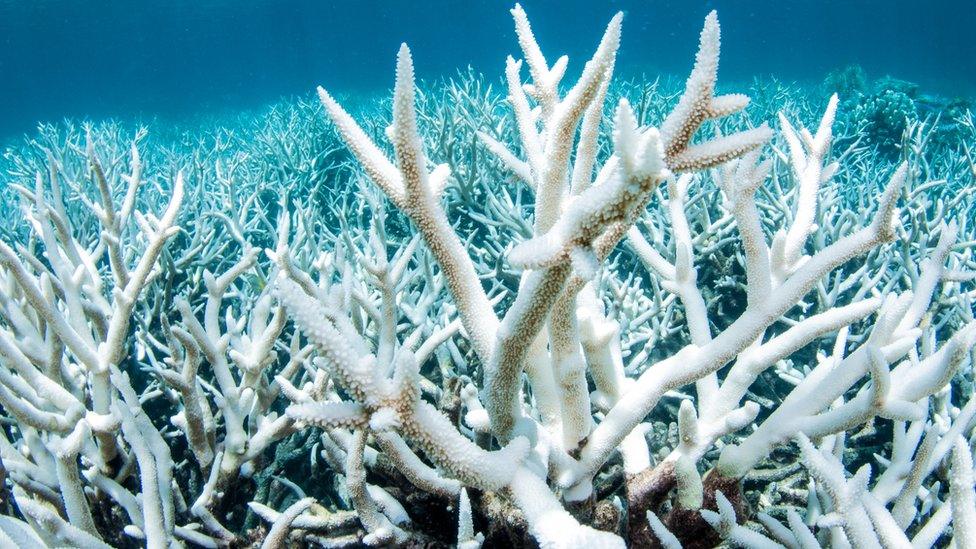
- Published10 March 2017
